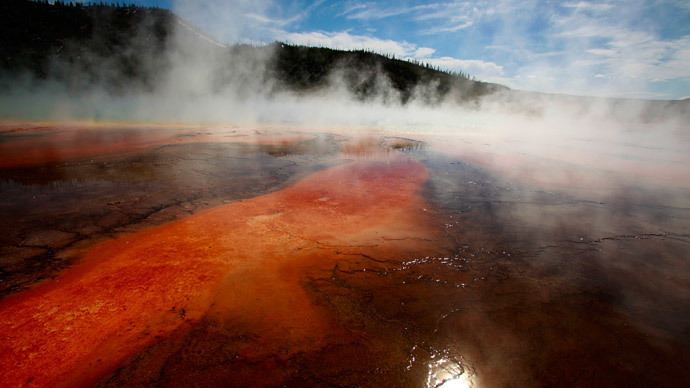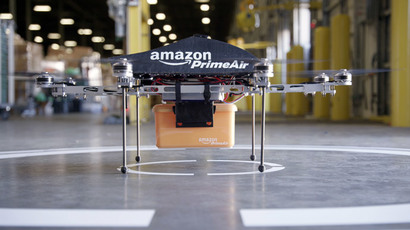Drone crashes into Yellowstone National Park's largest hot spring

A tourist recently crashed a camera-equipped drone into the largest hot spring in Yellowstone National Park, a park official said Wednesday, possibly causing damage to the geothermal feature.
It is still unclear whether the unmanned aerial vehicle that crashed and sank into Grand Prismatic Spring on Saturday would cause permanent corruption, park spokesman Al Nash said, according to Reuters. Park officials are still debating whether to attempt to remove the drone.
"What we have to determine is whether the presence of this radio-controlled recreational aircraft poses a threat to that unique resource," Nash said of the Grand Prismatic.
Park officials are unsure how to locate the drone and remove it without damaging the hot spring, which, at 370 feet in diameter and more than 121 feet deep, is the third-largest hot spring in the world.
Known for its array of colors caused by bacteria and minerals in the water, the Grand Prismatic is a top attraction at Yellowstone.
The downed drone follows another crash earlier this summer that planted an unmanned vehicle into a marina at Yellowstone Lake. In addition, there has been a series of radio-controlled aircraft violations at Grand Teton National Park in Wyoming of late.
Visitors are attempting to use camera-equipped drones to capture the natural beauty of the parks. Nash said these desires must be weighed against concerns for public safety, protection of natural resources, and complaints of other visitors to parks who have reported agitation over low-flying drones at Yellowstone.
In June, the National Park Service announced a ban on drones, yet officials say top national parks in western US states are reporting an increase in the number of incidents that have disturbed both wildlife and other tourists.
Drones are only the latest human encroachment against the park’s natural resources. Nash said visitors have, for example, thrown coins in water features, and fished from Yellowstone Lake’s Cone Geyser.
“People would stand on it with a fishing pole, catch a fish and then drop that fish into the thermal feature where it would cook,” said Nash.
“Once it was determined there was arsenic in the geyser water, that practice stopped,” he added.














